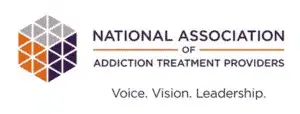Living with an alcoholic family member or loved one can be emotionally exhausting, overwhelming, and confusing. Although every individual’s experience is different, it is not uncommon to feel fear, guilt, or frustration when sharing a home with someone who struggles with alcohol misuse. However, there are strategies you can employ to cope, support them on their journey toward recovery, and protect your own well-being in the process. This article discusses some of the core challenges you may face, offers practical tips on helping someone quit drinking, and provides insight on how to avoid enabling behaviors.
Challenges of Living With an Alcoholic
Stress
Living with an alcoholic can be fraught with uncertainty and stress. You might constantly worry about when they will have their next drink or how their behavior will impact the household. For some people, it might feel like a constant state of crisis management: navigating mood swings, financial instability, or even physical and emotional harm. This stress can trickle into all aspects of your life, affecting not only your relationship with the alcoholic but also your own mental and physical health.
Isolation
Another challenge is the sense of isolation that often accompanies alcoholism within a family. While you may want to confide in friends or other relatives, fear of judgment or stigma around addiction can keep you silent. This isolation can lead to a cycle of shame and secrecy, making it even harder to reach out and ask for help. Furthermore, many family members struggle with conflicting emotions. You may feel anger toward the person for their drinking, yet a deep sense of concern for their well-being. Balancing empathy and self-preservation can be an ongoing challenge.
Guilt
Finally, watching someone you love struggle with alcohol can trigger complex feelings of guilt and powerlessness. You might blame yourself for not doing more, or for not being able to “fix” the problem. Recognizing that you are not responsible for another person’s decisions can be a hard but necessary step toward maintaining your own emotional stability.
This Season, Give Yourself the Gift of a Fresh Start.
Whether you are struggling with addiction, mental health or both, our expert team is here to guide you every step of the way. Don’t wait— reach out today to take the first step toward taking control of your life.
How to Help Someone You Live With Quit Drinking
Encourage Professional Help
The first step in helping a loved one who struggles with alcohol is to encourage them to seek professional treatment. Options include therapy, rehabilitation programs, and support groups like Alcoholics Anonymous (AA). While family support is critical, it often isn’t enough to address the underlying causes of addiction, which can include trauma, mental health issues, or genetic predispositions. Having an honest conversation about how their drinking affects you and urging them to see a doctor or therapist can be a powerful motivator.
Offer Emotional Support
Change is rarely a linear process, and relapses or setbacks may happen along the way. Providing non-judgmental, empathetic support can help build trust and encourage your loved one to persevere. Listening without interrupting or casting blame can help them feel heard, which may, in turn, reduce shame and defensiveness. You can also consider offering practical support, such as helping them research treatment options or accompanying them to medical appointments if they’re comfortable with that.
Set Clear Boundaries
While it’s important to be supportive, you also need to look after your own well-being. Setting boundaries helps define acceptable and unacceptable behaviors in the household. These boundaries might include no alcohol in shared spaces, no disruptive behavior after a certain hour, or an expectation of communication if they’ll be home late. When your loved one understands the consequences of breaking these boundaries, it can clarify that their behavior has real impacts on others. This also helps you avoid getting pulled into a cycle of chaos.
Engage in Family Therapy
Alcoholism is sometimes referred to as a family disease because it can affect everyone in a household, not just the person who drinks. Family therapy allows you, your loved one, and other members of the household to address communication problems, unresolved conflicts, and unhealthy relationship patterns. A trained therapist can help you establish healthier dynamics and coping strategies. This can create an environment that supports recovery rather than undermines it.
Tips for Living With an Alcoholic Before They Get Treatment
Maintain a Safe Environment
Safety should be your top priority, especially if your loved one exhibits unpredictable behavior when intoxicated. If you have children, ensure they have safe spaces to retreat to if conflicts arise. Consider keeping a phone or emergency numbers readily available. In severe cases, it may be necessary to temporarily remove yourself or vulnerable family members from the home until your loved one is in a more stable condition.
Focus on Self-Care
When someone else’s addiction becomes the household’s central concern, self-care can fall by the wayside. However, neglecting your own health and well-being can lead to burnout. Simple daily practices such as regular exercise, balanced meals, and adequate sleep can help you manage stress more effectively. Consider journaling, meditation, or even talking to a trusted friend to process your feelings. Participating in support groups like Al-Anon can also offer a safe space to share experiences with others in similar situations.
Educate Yourself About Alcoholism
Understanding the nature of alcoholism can reduce stigma and help you respond to your loved one’s condition more effectively. Learn about the signs and symptoms of alcohol dependence, the factors that contribute to it, and potential withdrawal symptoms. When you’re informed, you’ll be better equipped to identify triggers, recognize manipulative behaviors, and respond appropriately. Knowledge can empower you to make clearer decisions when guiding your loved one toward professional help.
Communicate Calmly and Effectively
Talking to someone who is drinking heavily can be challenging, as emotions can run high and conversations often spiral into arguments or denial. When addressing the problem, choose a calm moment—ideally when the person is not intoxicated—to discuss your concerns. Use “I” statements rather than “you” statements to express how their drinking affects you. For example, “I feel worried when you come home intoxicated” is often more effective than, “You always come home drunk.” This approach can reduce defensiveness and keep the focus on addressing the issue constructively.
How to Avoid Enabling an Alcoholic
Recognize Enabling Behaviors
Enabling occurs when you shield an alcoholic from the natural consequences of their actions. This might involve making excuses for them, taking on their responsibilities, or bailing them out of financial or legal trouble. Recognizing these behaviors can be the first step toward healthier boundaries. It’s normal to want to protect someone you love, but in doing so, you might inadvertently reinforce their addiction.
Practice Tough Love
“Tough love” does not mean being cruel or dismissive. Rather, it’s about establishing and maintaining firm boundaries that encourage your loved one to seek help for their drinking problem. For instance, if they fail to pay bills due to spending money on alcohol, it shouldn’t automatically become your responsibility to cover those costs. By allowing them to face the consequences of their actions, you are sending the message that their behaviors are their responsibility, not yours.
Seek Support for Yourself
It’s much harder to avoid enabling behaviors if you feel isolated or emotionally drained. Seek out a therapist, counselor, or support group that specializes in family dynamics affected by addiction. Sharing your experiences and learning from others who have gone through similar struggles can help you gain perspective and healthier coping mechanisms. This additional support can give you the emotional fortitude to stick with tough love strategies.
Getting Help for Alcoholic Family Members
Once a family member agrees that they need treatment for their alcohol use disorder, it may be overwhelming to understand where to start. The level of treatment needed depends on the severity of alcohol use and their willingness to participate.
There are various differing treatment options available to someone who is looking to get help for their alcohol use disorder. Depending on what is available in your area, inpatient and outpatient options can be considered.
Alcohol Rehab Treatment Options
If you are looking at alcohol rehab treatment options, The Recovery Village at Palmer Lake is a multidisciplinary facility that offers a full continuum of care in alcohol use disorder treatment. The levels of care include:
- Medical detox
- Inpatient treatment
- Partial hospitalization program (PHP)
- Intensive outpatient program (IOP)
- Outpatient Treatment
- Family programs
Depending on the level of care, indoor and outdoor amenities at The Recovery Village at Palmer Lake include but are not limited to:
- Heated swimming pool
- Two fully equipped exercise gyms
- Basketball court
- Sand volleyball court
- Squash court
- Pickleball court
- Yoga therapy
- Drama therapy
- Walking trails
- Mountain views
The staff is comprised of physicians, nurses, therapists, mental health counselors, psychiatrists, behavioral health technicians and many others.
If you suspect a family member is abusing alcohol, contact the admissions team at The Recovery Village at Palmer Lake today.
FAQs on Living With an Alcoholic
1. Should I confront my loved one about their drinking?
Confronting a loved one about their drinking can be a sensitive endeavor. If you do decide to talk about it, choose a time when they are sober or less likely to be defensive. Use a calm tone, focus on how their behavior affects you and others, and avoid placing blame. It may also be helpful to plan what you’ll say ahead of time or even consult a professional for guidance.
2. What should I do if my loved one becomes aggressive or abusive?
If you ever feel threatened or unsafe, your immediate priority should be to remove yourself and any other vulnerable individuals from the situation. Call emergency services if necessary. Physical or emotional abuse is never acceptable, regardless of the reason. You may also want to have a safety plan in place, which might involve staying with friends or family, or seeking assistance from local shelters or domestic violence hotlines.
3. How do I know if I’m enabling their behavior?
Ask yourself if you’re frequently covering for your loved one’s mistakes, taking on their responsibilities, or neglecting your own needs to “fix” their problems. If the answer is yes to these scenarios, it’s possible you’re enabling. Another indicator is feeling like you’re walking on eggshells to avoid triggering their drinking. Recognizing these patterns is crucial to breaking the cycle and promoting recovery.
4. Can I force my loved one to enter treatment?
In most cases, forcing someone into treatment is neither feasible nor effective long-term. Unless there is a legal mandate (such as court-ordered rehab), an individual generally needs to choose treatment for themselves. You can encourage and facilitate treatment—by helping research options, offering emotional support, and expressing concern—but ultimately, the decision and motivation must come from the person struggling with alcoholism.
5. How do I cope with the stress of living with an alcoholic?
Living with an alcoholic can be emotionally draining. Coping strategies can include engaging in regular self-care (exercise, hobbies, social activities), seeking professional help for yourself, and joining support groups like Al-Anon. You might also explore therapy or counseling services to process feelings of anger, guilt, or anxiety. Building a reliable support network—whether through friends, family, or professionals—can make a significant difference in how you handle day-to-day stress.








